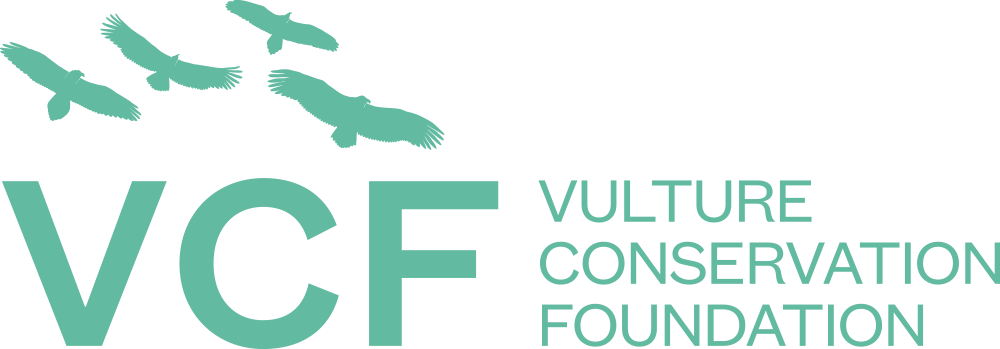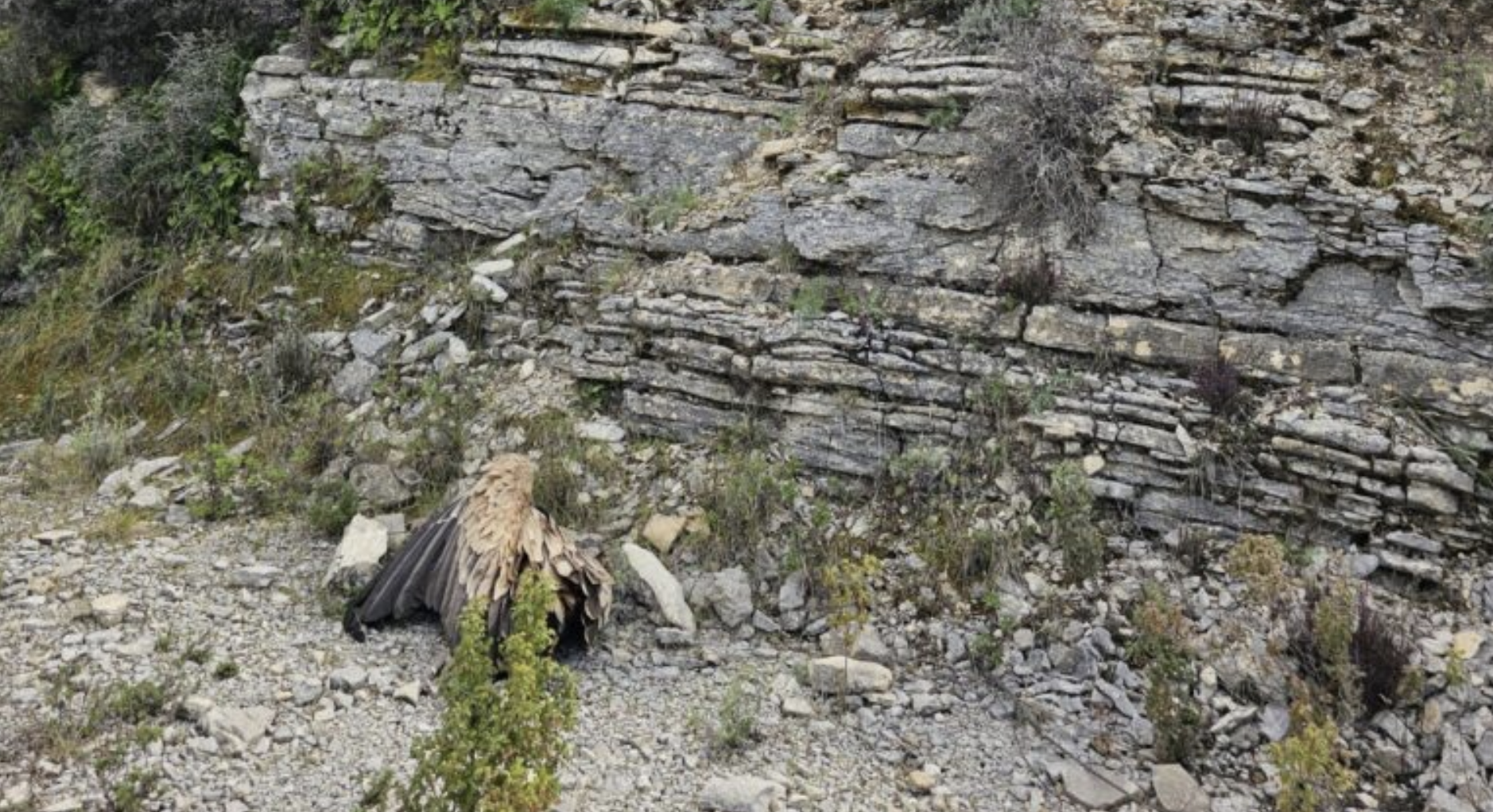
2020 was a challenging year for all of us, but our work never stopped, and we continued to protect and conserve Europe vulture species despite the extra difficulties.
Counting down the days until 2021, we will publish a blog post sharing the highlights of each of Europe’s vulture species’ conservation achievements. Today, we focus on the Griffon Vulture, Europe’s most social vulture species.
Rhodopes — LIFE RE-Vultures

In Eastern Europe, the Griffon Vulture population is increasing thanks to many conservation projects. LIFE Re-Vultures developed by Rewilding Europe is one of these projects, which aims to protect the Cinereous and Griffon Vultures in the Rhodope Mountains in Greece and Bulgaria. The census from last year´s breeding population in the eastern Rhodopes reached 100 pairs with over 70 chicks hatching this year. Recently, the project had more optimistic news, with the highest-ever number of roosting Griffon Vultures counted in the Rhodope Mountains. The vultures of course are benefitting from the conservation actions of the project, which among other things is reintroducing wild ungulates, as part of a rewilding approach, to restore the vulture food chains, or establishing supplementary feeding sites to support them. Furthermore, they tackle threats like poisoning and electrocution, and this year more electric poles were insulated in the Rhodope Mountains in Bulgaria to protect vultures. Interestingly, Saudi Arabia seems to be one of the most preferred travel destinations for the young Griffon Vultures from the Rhodope Mountains in Bulgaria. Griffons in Europe are partial migrants, particularly in the Balkans, and often individuals make great trips along their lives Two Griffon Vultures equipped with satellite transmitter within the LIFE Re-Vultures project have spent many months far away from home this year, reaching Saudi Arabia.
Bulgaria — Vultures Back To LIFE

A vision to see Griffon Vulture fly again in areas where they disappeared in the north of Bulgaria initiated an ambitious reintroduction project ten years ago — VULTURES’ RETURN. Targeted releases of imported Griffon Vultures coming from the healthy and growing populations of the species in Spain and France as well as of captive background started. Since then, the VULTURES’ RETURN project and the Vultures Back to LIFE led by Green Balkans and Fund for Wild Flora and Fauna (FWFF), released total of about 260 Griffon Vultures. Today, ten years after the beginning of the Griffon Vulture releases, the species is now recovered in the region with 15 to 18 pairs nesting in Vrachanski Balkan, 18 to 23 pairs in Eastern Stara Planina, 7 to 8 breeding pairs in Kresna gorge, and local colonies numbering up to 50 to 70, 80 to 100, and 50-70 birds respectively.
Balkans — Balkan Anti-Poisoning Project

The Balkan Anti-Poisoning Project (BAPP), led by the Vulture Conservation Foundation (VCF), is a cross-border initiative bringing together wildlife conservation organizations, governmental agencies and other stakeholder such as; hunting associations, farmers and scientists, in six Balkan countries to tackle illegal wildlife poisoning. As part of the project’s efforts to tackle this threat, five Griffon Vultures were equipped with GPS transmitters by FWFF in Messolonghi, Greece, this year following the catastrophic mass poisoning incident at the Griffon Vulture colony in the region. The colony in Messolonghi is the largest Griffon Vulture colony in Mainland Greece and one of the most important wintering areas for the species in the Balkans, and tagging these birds will help set up an early warning system for wildlife poisoning in the area. One of the birds tagged for this aim in the Balkans, travelled all the way from North Macedonia to Iran in recent months!
Furthermore, with the support of the BAPP – Small Grants Programme, our partners from the Hellenic Society for Protection of Nature have in close cooperation with the Management Body of Messolonghi lagoon – Akarnania Mountain built an experimental aviary unit, as an infrastructure of reception, care, acclimatization and rehabilitation of Griffon Vultures and other scavengers. The aviary was constructed at the “Hephaestus” quarry on Mount Arakinthos. Within the framework of this programme, a fenced area, directly adjacent to the cage, was also created for provision of safe food for the vultures, while achieving the prevention of the entry of wild animals.
Sardinia — LIFE Under Griffon Wings

The island population of the Griffon Vulture in Sardinia is doing much better, mainly because of LIFE Under Griffon Wings. Led by Sassari University, the project there aims to improve the food availability, by establishing a network of farm feeding stations that are managed by the livestock breeders themselves, and to tackle illegal wildlife poisoning. The project is also carrying out an extensive restocking programme to enhance the small population by translocating birds from wildlife rehabilitation centres in Spain – up until now 67 birds were successfully secured and transported by the VCF. The population in Sardinia has increased significantly, from 130 individuals in 2013 to approximately 250 now, certainly a result of the project.
Cyprus — LIFE with Vultures

Another island population in the Mediterranean is, unfortunately, not doing so well. However, there is hope since the new project, LIFE with Vultures, has started in Cyprus to try to boost the island’s small and endangered population, that now numbers only about 20 individuals, by tackling threats such as poisoning and restocking the population by releasing Spanish birds. This year, the VCF carried a Population Viability Analysis (PVA), a method of risk assessment used in conservation biology to determine the probability of a population going extinct within a given number of years, and the results confirm the urgency to save the Griffon Vulture in Cyprus while paving the way on how to save the species.
Mallorca — Studying Griffons and Cinereous Vultures
In 2008, Griffon Vultures arrived in the Balearic Islands in an extraordinary colonization event. Ever since, the species has adapted to the habitat of Mallorca and started to breed, and is sharing territory and resources with the resident Cinereous Vultures that also staged a remarkable comeback. A research project is trying to study the interspecific interactions and for the first time, equipped a Griffon Vulture with a GPS tag on the island that happened to be a nestling. Thankfully, the little one successfully fledged, and the project team tracked the first flights of the bird, and continues to do monitor its movements.
Other parts of Europe
Griffon Vultures continue to increase in Europe. Spain has 30,000 pairs, in France the species has successfully recolonised all the southern part of the country. The population in the Bulgarian Rhodopes is also increasing, as is the colony in northeaster Italy, and in Israel. In Armenia the census uncovered a population of about 50 breeding pairs – but a case of disturbance by helicopters in Serbia is worrying.
Some good solutions increasing the food supply for griffons have been established in northern Greece, while a census of summering griffons in the Alps helped establish the growing population there – and read here for a great story about a fossilized griffon. Furthermore, Griffon Vultures in Spain have been attempting to breed with Europe’s 5th vulture species — the Ruppell’s Vulture, which has been recently officially recognized in the Andalusia list of species. Early this year, two different adult Rüppell’s Vultures have been regarded as showing breeding behaviour in Griffon Vulture colonies in Cádiz and Málaga respectively.
You can track the movements of the Griffon Vultures we follow with GPS tags by visiting our online public maps.
If you want to help vultures during this holiday season, here are three things you can do:
- Sign up to our newsletter to stay updated, and for offering to help vultures when such need arises
- Please donate to the VCF and help us continue our work protecting vultures
- Spread the word on social media and pledge to discuss vultures and their importance to three other people this holiday season
Thank you for your support — we hope you are safe and healthy, and have a very happy new year!




